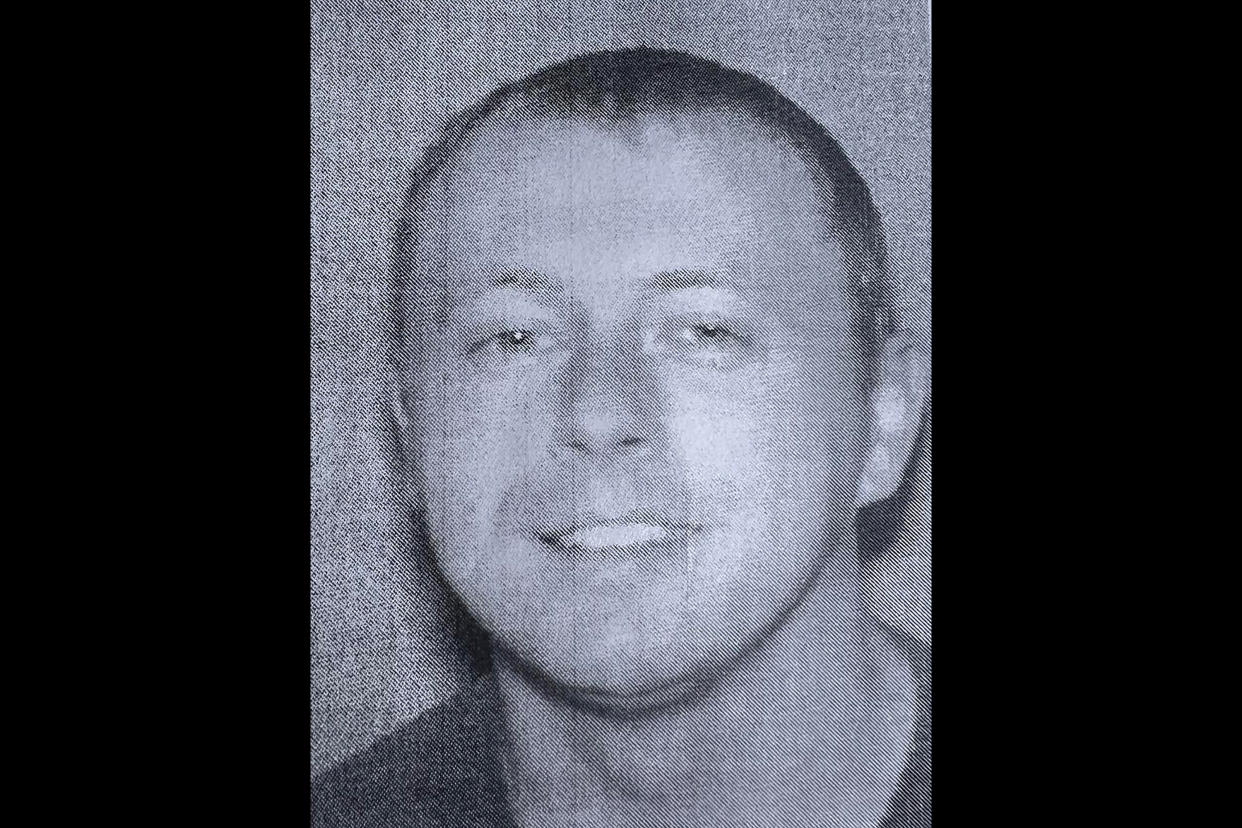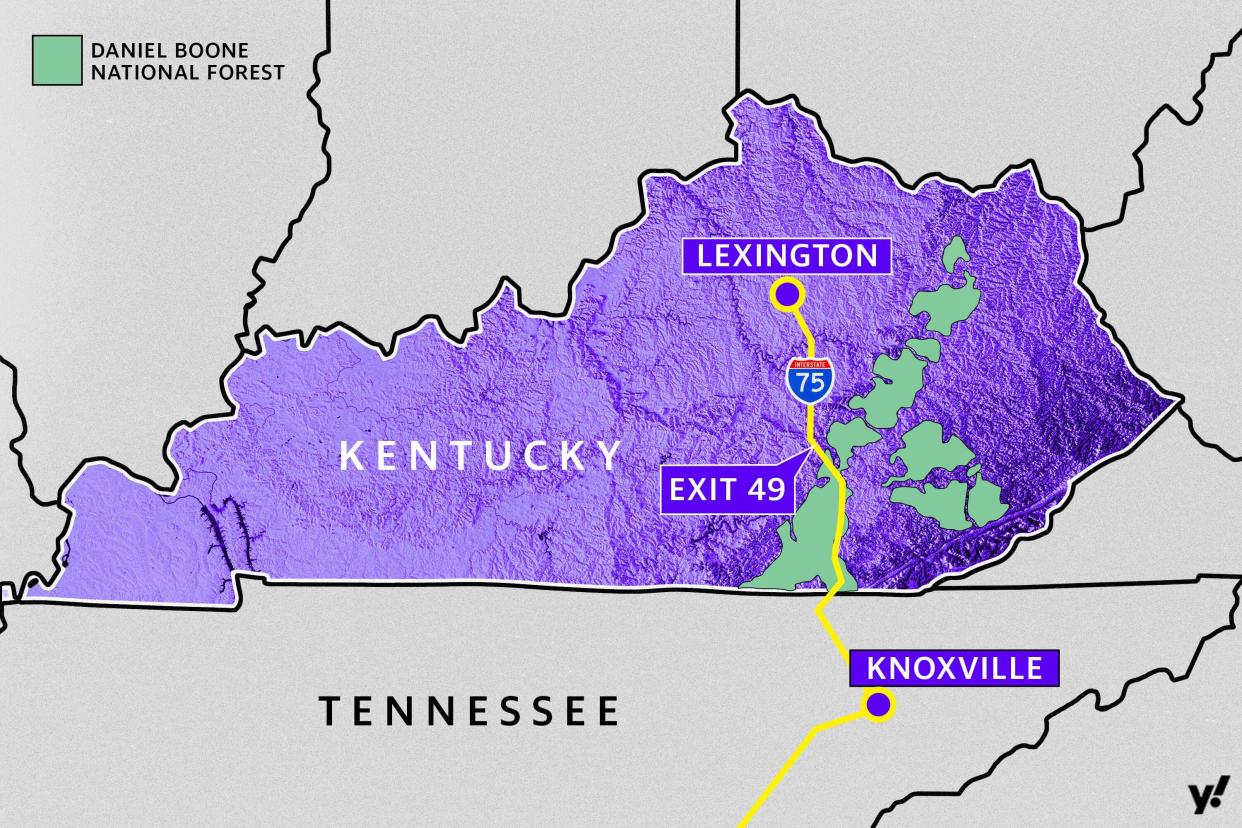Search area extended in manhunt for Kentucky I-75 shooting suspect Joseph Couch as it enters day 7. What retired FBI agents say might be the biggest challenges.

An intense manhunt in search of a suspected gunman — said to be armed and dangerous — entered its seventh day as authorities extended the search area Friday.
Authorities in Kentucky allege that Joseph Couch, 32, opened fire near Interstate 75 last Saturday, leaving five people wounded. Law enforcement officials say they're hoping this manhunt will wear down the suspect, who is believed to be hiding in the vast and dense Daniel Boone Forest, about 8 miles from London, Ky.
A reward leading to Couch’s arrest has increased to $35,000. Out of an “abundance of caution,” area schools started remote learning on Thursday after being closed earlier this week.
“They haven’t found this individual yet, but that’s not for lack of trying,” Kentucky Gov. Andy Beshear told reporters Thursday. “There are so many individuals, so many resources that have been brought to bear and will continue to be brought to bear.”
Yahoo News spoke to former FBI agents who have searched for suspects in manhunts across the U.S. They say the manhunt is still in the early stages due to the difficult terrain, which will be a challenge for law enforcement — and a potential advantage for Couch.
Who’s involved in the manhunt?
Kentucky State Police are leading the manhunt for Couch. The Laurel County Sheriff’s Office is leading the criminal investigation into Saturday’s shooting.
Several additional agencies involved in the manhunt include: the London City Police Department, the FBI, the Bureau of Alcohol, Tobacco, Firearms and Explosives (ATF), the U.S. Marshals Service, Kentucky Fish and Wildlife, the Federal Forestry Service and the Kentucky National Guard, which have Black Hawk helicopters to help search the thick undergrowth of the forest.
In addition to boots on the ground, authorities are using drones, helicopters and search dogs in an effort to search through what Beshear described as “the most rugged terrain that anyone could hide in.”
What has the search been like?

Since Saturday, federal, state and local officers have been on the ground conducting daunting grid searches in the Daniel Boone National Forest by exit 49 off I-75 near the scene of Saturday’s shooting, where officials recovered a silver vehicle registered to Couch.
Kentucky State Police Master Trooper Scottie Pennington said Friday that authorities have "extended the search deeper into Daniel Boone National Forest." He previously told reporters that there was no indication that Couch had exited the woods. “We’re going to stay in the woods until we find him. That’s our job. If he’s dead or alive, it’s our job to try to find him.”
The Daniel Boone National Forest is massive, spanning 21 counties in eastern Kentucky. It's about the size of Puerto Rico, which has a land area of about 3,400 square miles.
“KSP along with state, local, and federal partners continue the search for Joseph Couch. This video depicts the dense area law enforcement encounter during the search.” -Trooper Scottie Pennington Post 11 pic.twitter.com/Bf6zkSdOXz
— KY State Police (@kystatepolice) September 10, 2024
The search area has other challenges: It’s full of sinkholes and cliff beds that are dangerous for searchers on the ground.
Authorities have “worked through rough terrain, they’ve worked in the dark and understand in this terrain they’ve put their own lives on the line,” Beshear said Thursday.
What is a grid search?
In a manhunt, authorities commonly use a technique called a “grid search.” Retired FBI agent Scott Duffey told Yahoo News that these allow “law enforcement to methodically search a very large area one section at a time.”
Duffey said those boots on the ground will walk in a straight line at a designated starting point, walking toe to heel, very slowly, looking from left to right and in front of them. Once that section is done, it’s marked off as complete.
In order to ensure the fugitive doesn’t backtrack through that completed search area, stationary officers are posted around that perimeter.
The idea is to “keep moving him forward until there is no place left to go,” Duffey explained.
Communication is key in a manhunt
With all of the different law enforcement and federal agencies involved, Pennington said it’s a “constant communication effort.”
“We have to tie those networks together to go out and do grid searches,” Pennington told reporters, adding that it helps keep the boots on the ground safe, as well as to relay anything they find in their search for Couch.
“It’s got to be the right communication and that’s why these things take so long,” Pennington said.
What could law enforcement use to detect Couch?
Retired FBI agent Ray Carr told Yahoo News he worked on the 2014 manhunt for Eric Frein, which took 48 days and resulted in over 1,000 people looking for him.
“What I'm hoping they may have done is use helicopters with infrared which sends off heat sources,” Carr explained. “When it's very, very warm out, those infrared heat sources aren't as viable as when it's cold.” According to Carr, one thing Laurel County sheriffs officials may have done when searching Couch’s home in their investigation was retrieving a piece of the suspect’s clothing as a source for a tracking dog to locate him.
Duffey said that due to the terrain of the manhunt where there are cliffs and hills, “it's not at all out of the realm of possibility that if [Couch] is still alive, that he can easily remain aloof to law enforcement for two weeks.”
How long can Couch survive?
For now, Kentucky State Police are hoping to wear Couch down. “I hope he doesn’t have water. I hope he doesn’t have food. And I hope he’s just worn out and eventually he’ll walk out of the forest. That’s what I hope happens,” Pennington told reporters Tuesday.
If Couch dies, Pennington said there are signs that could tip off searchers.
“If it continues to be hot outside, and [Couch] has passed away, nature takes care of itself, you can see a lot of things from the air a lot of times, buzzards start to fly and if your body is decaying out there, that could help in this investigation. Not saying that will happen, but that’s human life,” Pennington said.


